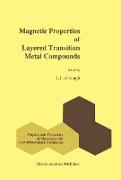- Start
- Magnetic Properties of Layered Transition Metal Compounds
Magnetic Properties of Layered Transition Metal Compounds
Angebote / Angebote:
In the last two decades low-dimensional (low-d) physics has matured into a major branch of science. Quite generally we may define a system with restricted dimensionality d as an object that is infinite only in one or two spatial directions (d = 1 and 2). Such a definition comprises isolated single chains or layers, but also fibres and thin layers (films) of varying but finite thickness. Clearly, a multitude of physical phenomena, notably in solid state physics, fall into these categories. As examples, we may mention: . Magnetic chains or layers (thin-film technology). . Metallic films (homogeneous or heterogeneous, crystalline, amorphous or microcristalline, etc.). . I-d or 2-d conductors and superconductors. . Intercalated systems. . 2-d electron gases (electrons on helium, semiconductor interfaces). . Surface layer problems (2-d melting of monolayers of noble gases on a substrate, surface problems in general). . Superfluid films of ~He or 'He. . Polymer physics. . Organic and inorganic chain conductors, superionic conductors. . I-d or 2-d molecular crystals and liquid crystals. . I-d or 2-d ferro- and antiferro electrics.
Folgt in ca. 15 Arbeitstagen




